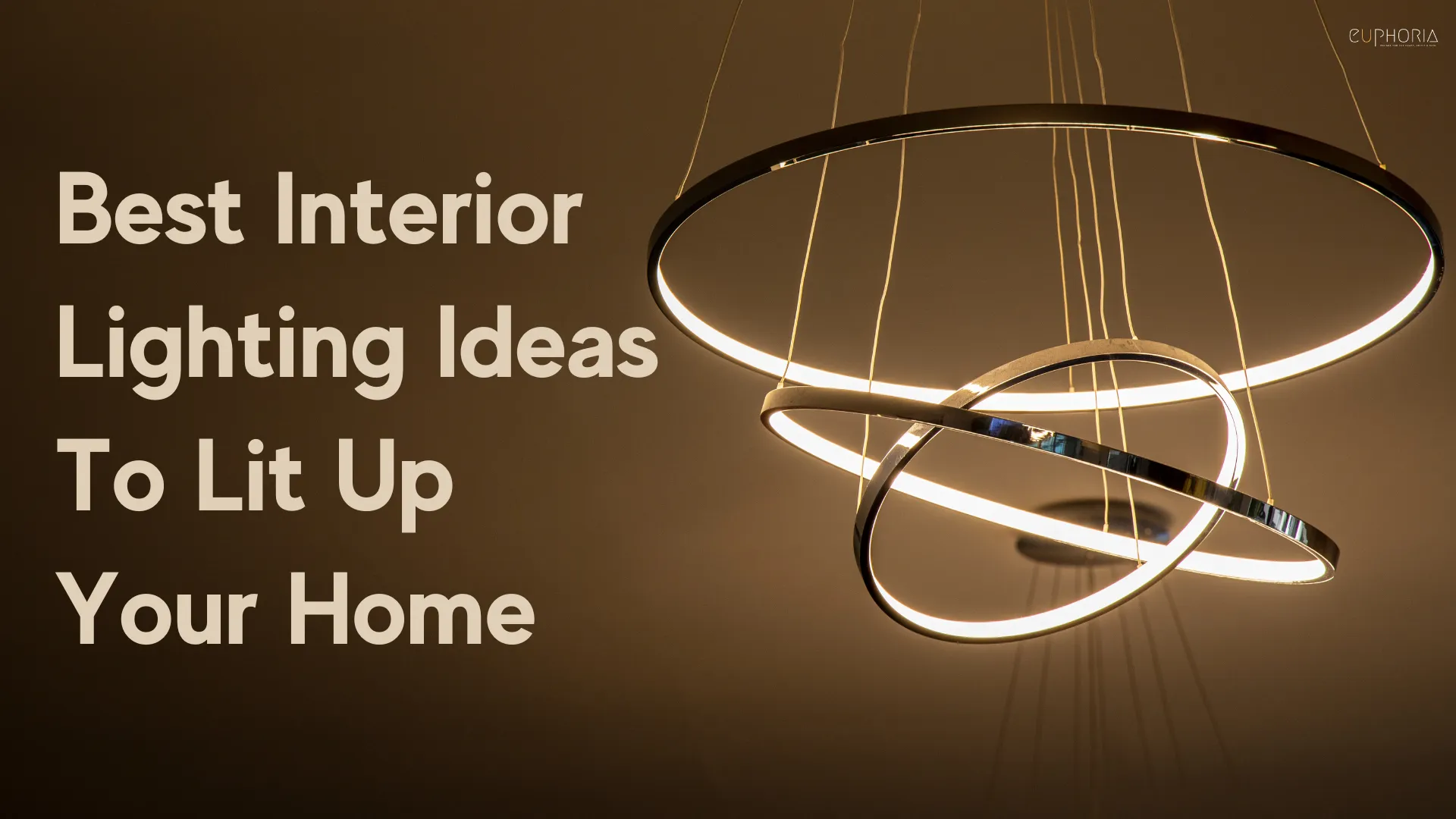One of the most important parts of home planning are the lights. It does more than just light up a room; it sets the mood, brings out the best in your decor, and can even make your home look bigger and friendlier. Lighting is an important part of any project, whether you’re remodeling a room or starting from scratch to build your dream home. Let’s look at some of the best ideas for indoor lighting that will make your home and your mood better.
Few Interior Lighting Ideas To Lit Up Your Home
1. Add layers of light
Adding layers is the key to making rooms bright. Three kinds of light are used in layered lighting:
Background lighting is the main type of light in a room. Ceiling lights, chandeliers, or hidden lights that give off a general glow come to mind.
Task lighting is lighting that is focused on a certain activity, like reading, cooking, or working. In this group are table lamps, under-cabinet lights, and desk lamps.
Accent lighting is used to draw attention to certain things, like plants, artwork, or building details. This can be done with wall sconces, track lights, and LED bars.
By putting these three layers together, you can make a place that works well and looks good.
2. To be flexible, use dimmers
Putting in dimmers is one of the best ways to make your lighting better. With a dimmer, you can change how bright your lights are to suit your wants and mood. Want to make a dinner party feel romantic? Turn down the lights. Want directed light for a do-it-yourself project? Make them louder. They’re very flexible and can be put on almost any kind of light bulb.
3. Pay attention to natural light
Don’t forget how powerful natural light can be. Skylights, large windows, and glass doors can let a lot of sunlight into your home during the day, so you won’t need as much artificial lighting. If you’re worried about privacy, you could use thin curtains or frosted glass to let some light in while still making the room feel private.
Tip: Place mirrors in a way that lets natural light bounce around the room and make it seem brighter and bigger.
4. Put in Statement Fixtures
Light sources that make a statement, like big pendants or complicated chandeliers, can be the room’s main attraction. They not only let light in, but they also give your place a little depth and personality.
As an example:
For a classy look, hang a beautiful chandelier in the dining room.
Give your living room a cozy, bohemian vibe with a hanging light made of rattan that is too big.
You can keep the kitchen current and edgy by adding a fixture in an industrial style.
5. Draw attention to architectural details
Use lights to draw attention to your home’s unique architectural features.
You can draw attention to textured walls with recessed lights or high ceilings or wooden beams with uplighting. This not only makes your home look more beautiful, but it also gives it depth and dimension.
6. Put in LED strips
There is no doubt that LED strips have changed the way modern and flexible lighting is made. To make a soft glow, you can put them under kitchen shelves, along stairs, or behind TVs. They also use little energy and come in many colors, so you can change the mood of the room.
Different Ways to Use LED Strips:
Put them under bathroom sinks to make the room feel like a spa.
To make them look like they’re flying, put them along the baseboards.
Put them on bookcases to draw attention to your favorite books.
7. Pick the Right Light Bulbs
What kind of bulb you use can really change how a room feels. Here is a quick guide:
Warm White (2700K–3000K): This color makes rooms feel cozy, so it’s great for living rooms and beds.
For areas that need brighter, more focused light, cool white (3500K–4100K) is great.
Dayslight (5000K–6500K): This color temperature is great for home offices or reading places where clarity is important.
Also, think about LED bulbs. They use less energy, last longer, and come in many styles and amounts of brightness.
8. Don’t forget to light up the outside
You should think about how your indoor lighting flows into your outdoor areas as well. With wall sconces, string lights, and lanterns, you can make your patio or porch feel like an extra room in your house. Motion-sensor lights are also a useful and safe choice for paths and entrances.
9. Start using smart lighting
The way we light our houses is changing a lot because of smart lighting systems. With these systems, you can use an app on your phone or your voice to control your lights. You can change the color and strength of the lights and even set times for them to turn on and off.
Philips Hue and LIFX are two popular options that let you change a lot of things, like how the lights work with your music and how they look like natural sunlight.
10. Mix and Match Styles
Do not be scared to use various types of lights in the same area. You can put together a vintage chandelier and modern recessed lighting, or you can put together industrial sconces and boho hanging lights. This gives your lights personality and shows off your personal style.
11. Look at the size of Decors
Size is very important when picking out light sources. Too-small of a chandelier will look out of place in a big dining room, and too-big of a light might be too much for a small kitchen. Before you buy something, measure the space and picture how it will look in the room.
12. Don’t use too much colored lighting
Colored lighting can be fun and exciting, but it should only be used in small amounts. For bedrooms, choose soft colors like blues and pinks. In common areas, stay away from bright, neon colors unless it’s for a themed event or place.
13. Put lights in strange places
Think outside the box about where you put the lights. As an example:
For better sight, put lights inside cabinets or drawers.
Put in small LED lamps to light up plants inside.
For extra use, put battery-powered puck lights in closets or under boxes.
14. Think about the dark spots
Lights are supposed to shine, but you don’t want to make shadows that are too harsh. Try different light fixtures and where you put the lights to get rid of shadows that don’t look good on walls and ceilings. As an example, wall sconces set at eye level can give off even light without making lines that stand out.
Conclusion
Try out your lighting options before you decide on the best ones. Try out different lighting arrangements in your space at different times of the day by using portable lights or fixtures that can be moved around. This helps you avoid mistakes that cost a lot of money and makes sure you like how things turn out in the end.
FAQs
How do I pick the right lights for my living room?
Pay attention to how you stack your lights. Mix general lighting (like a ceiling light), job lighting (like a floor lamp next to a reading chair), and accent lighting (like LED strips behind the TV). Choose warm white lights to make the room feel cozy.
2. What’s the best way to make a small room bright?
To make the most of natural light, use mirrors and light-colored decorations. To save floor and table room, choose fixtures that can do more than one thing, like wall sconces or pendant lights. Lighting that is too strong or bright can make the room feel small.
3. Are LED lights better than regular bulbs?
Yes! LED lights use little electricity, last a long time, and can be used in many ways. They come in many colors and amounts of brightness, so they can be used in any room. They save money in the long run and are good for the environment.
4. Is it possible to add smart lights to an older house?
Of course! Smart lighting systems like LIFX and Philips Hue are made to work with a wide range of home systems. You can use plug-in smart outlets for lamps or swap your old bulbs with smart ones. It’s usually easy to install and doesn’t require a lot of rewiring.


